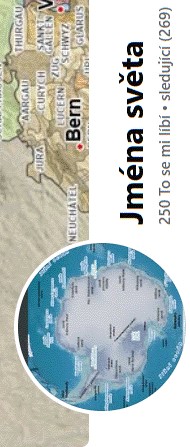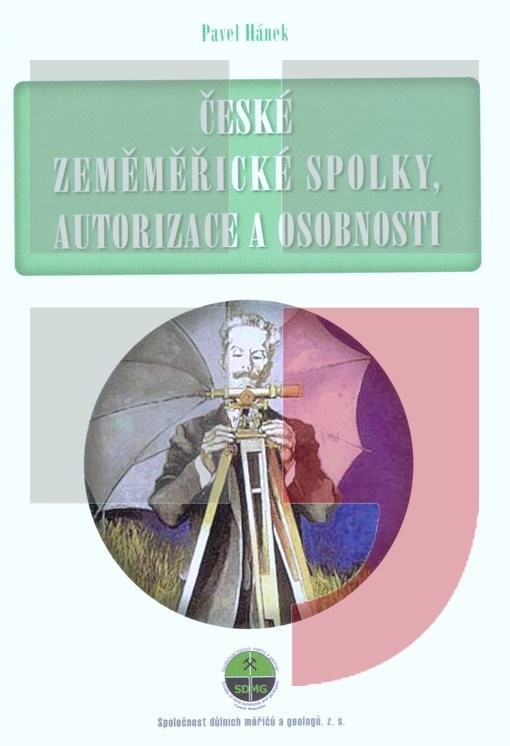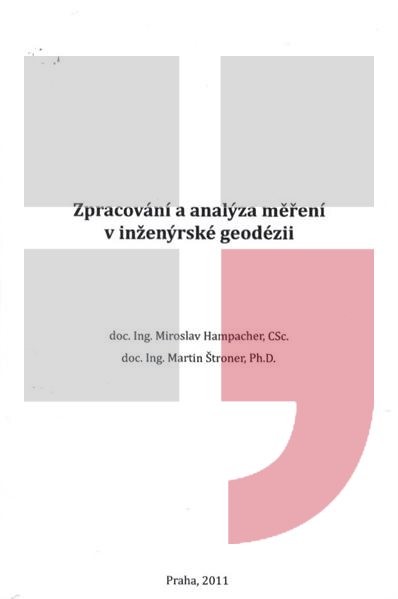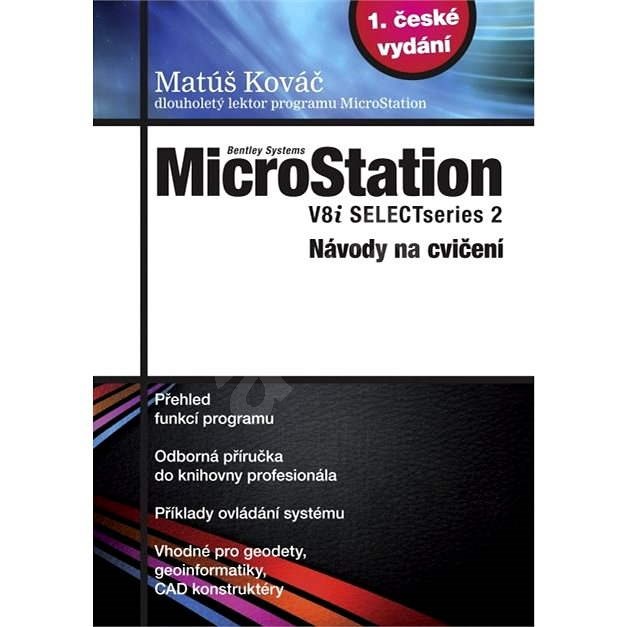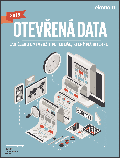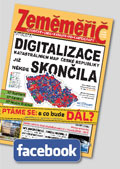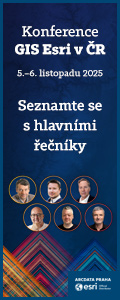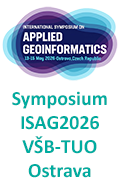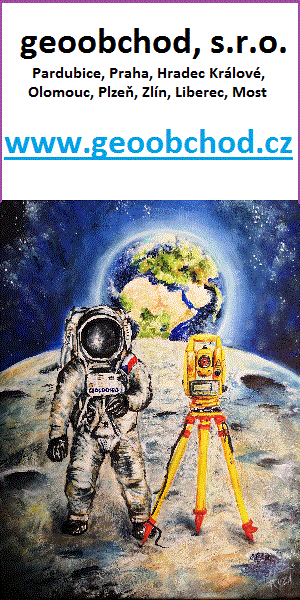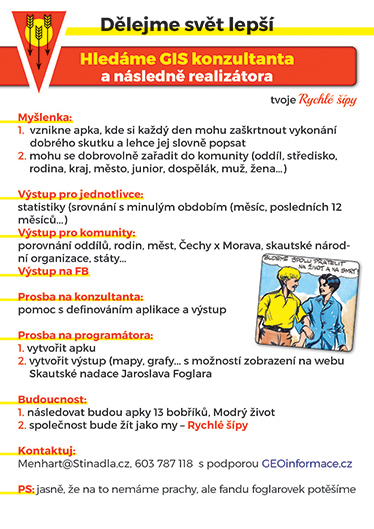zprávy
zdroje zpráv:Vedoucí oddělení spisové služby, odbor vnitřní správy
5.1.2017 0:00 Státní pozemkový úřad Státní pozemkový úřad přijme zaměstnance na pozici vedoucí oddělení spisové služby.Oznámení o vyhlášení výběrového řízení na služební místo vedoucí oddělení správy vodohospodářských staveb Brno
5.1.2017 0:00 Státní pozemkový úřad Ústřední ředitelka Státního pozemkového úřadu, jako služební orgán příslušný podle § 10 odst. 1 písm. f) zákona č. 234/2014 Sb., o státní službě (dále jen „zákon“), vyhlašuje výběrové řízení.Oznámení o vyhlášení výběrového řízení na služební místo vedoucí oddělení správy vodohospodářských staveb České Budějovice
5.1.2017 0:00 Státní pozemkový úřad Ústřední ředitelka Státního pozemkového úřadu, jako služební orgán příslušný podle § 10 odst. 1 písm. f) zákona č. 234/2014 Sb., o státní službě (dále jen „zákon“), vyhlašuje výběrové řízení.Oznámení o vyhlášení výběrového řízení na služební místo ředitel odboru rozvoje ICT a řízení projektů
5.1.2017 0:00 Státní pozemkový úřad Ústřední ředitelka Státního pozemkového úřadu, jako služební orgán příslušný podle § 10 odst. 1 písm. f) zákona č. 234/2014 Sb., o státní službě (dále jen „zákon“), vyhlašuje výběrové řízení.Oznámení o vyhlášení výběrového řízení na služební místo rada/odborný rada odboru interního auditu, oddělení výkonu auditu
5.1.2017 0:00 Státní pozemkový úřad Ústřední ředitelka Státního pozemkového úřadu, jako služební orgán příslušný podle § 10 odst. 1 písm. f) zákona č. 234/2014 Sb., o státní službě (dále jen „zákon“), vyhlašuje výběrové řízení.Oznámení o vyhlášení výběrového řízení na služební místo vedoucí oddělení správy vodohospodářských staveb Hradec Králové
5.1.2017 0:00 Státní pozemkový úřad Ústřední ředitelka Státního pozemkového úřadu, jako služební orgán příslušný podle § 10 odst. 1 písm. f) zákona č. 234/2014 Sb., o státní službě (dále jen „zákon“), vyhlašuje výběrové řízení.Bakalářské práce – nová témata pro prezenční studium
4.1.2017 22:41 Katedra geografie UP Olomouc Nová témata bakalářských prací z geografie, s předpokládaným odevzdáním v dubnu 2018, jsou zveřejněna prostřednictvím tohoto seznamu (PDF) – část témat je již předjednána, ostatní témata jsou nabídnuta potenciálním zájemcům (výběr probíhá dohodou s příslušným vyučujícím).K tématu práce se přihlaste přes STAG nejpozději do 31. ledna 2017 – týká se to všech studentů 2. ročníku bakalářského studia Regionální geografie a také těch studentů 2. ročníku bakalářského studia Geografie (uč.), kteří se rozhodli napsat svou bakalářskou práci z geografie.
Postup zadání tématu práce je následující: student ve spolupráci s vedoucím práce vyplní ve STAGu přihlášku Podklad pro zadání kvalifikační práce a podepsaný výtisk této přihlášky odevzdá na sekretariátě katedry, kde mu bude vystaveno oficiální zadání práce.
Using 3D Reality Meshes to Index Huge Amounts of Asset Information — And Enable Real-Time Monitoring
4.1.2017 20:15 Bentley SystemsPress Coverage
SPAR 3D
Read the articleIneco Design Complex Birmingham Delta Junction for HS2 Rail Project Using Bentley Software
4.1.2017 20:12 Bentley SystemsPress Coverage
MicroStation Connections
Read the articleARCDATA PRAHA pořádá roll-out 2017
4.1.2017 15:49 GISportal.cz Zajímá Vás jaké jsou novinky v produktech Esri a třeba jste nestihli uživatelskou konferenci? Můžete přijít zdarma na akci „roll-out 2017„, kde se dozvíte: Úvod do platformy ArcGIS Novinky v ArcGIS Pro 1.4 Nové aplikace ArcGIS (Collector for ArcGIS, ...2016
4.1.2017 12:50 ČÚZK /Urady/Katastralni-urady/Katastralni-urady/Katastralni-urad-pro-Pardubicky-kraj/Vyrocni-zpravy/20162016
4.1.2017 12:50 ČÚZK - předpisy a opatření Katastrální úřad pro Pardubický krajvydává výroční zprávu úřadu za rok
2016
2017
4.1.2017 12:49 ČÚZK - předpisy a opatření Katastrální úřad pro Olomoucký krajvystavuje rozpočet úřadu za rok
2017
2017
4.1.2017 12:49 ČÚZK - předpisy a opatření Katastrální úřad pro Olomoucký krajvystavuje rozpočet úřadu za rok
2017
2017
4.1.2017 12:49 ČÚZK /Urady/Katastralni-urady/Katastralni-urady/Katastralni-urad-pro-Olomoucky-kraj/Rozpocet/20172017
4.1.2017 12:11 ČÚZK - předpisy a opatření Český úřad zeměměřický a katastrálnívystavuje rozpočet úřadu za rok
2017
Rozpočet úřadu za rok 20
4.1.2017 12:11 ČÚZK /Urady/Cesky-urad-zememericky-a-katastralni/Rozpocty/20172017
4.1.2017 12:11 ČÚZK - předpisy a opatření Český úřad zeměměřický a katastrálnívystavuje rozpočet úřadu za rok
2017
Rozpočet úřadu za rok 20
4.1.2017 12:11 ČÚZK - předpisy a opatření Český úřad zeměměřický a katastrálnívystavuje rozpočet úřadu za rok
2017
V datech územně analytických p
4.1.2017 12:00 Plzeňský kraj V datech územně analytických podkladů Plzeňského kraje byla provedena kompletní aktualizace dat technické infrastruktury od poskytovatele GasNet, s.r.o. (http://geoportal.plzensky-kraj.cz/gs/rss?url=http%3A%2F%2Fgeoportal.plzensky-kraj.cz%2Ftw%2Fost%2Fgp%2Fuap%2Fposkytovatele%2Findex.php%3Fframe%26ID%3D540) Data jsou s platností k 3. 1. 2017.V datech územně analytických p
4.1.2017 12:00 Plzeňský kraj V datech územně analytických podkladů Plzeňského kraje byla provedena kompletní aktualizace dat technické infrastruktury od poskytovatele GasNet, s.r.o. Data jsou s platností k 3. 1. 2017.Do evidence Územně analytickýc
4.1.2017 12:00 Jihočeský kraj Do evidence Územně analytických podkladů ORP (http://geoportal.kraj-jihocesky.gov.cz/gs/uzemne-analyticke-podklady-orp/) byly přidány dokumentace IV. aktualizací ÚAP následujících ORP: Blatná, České Budějovice, Český Krumlov, Dačice, Jindřichův Hradec, Písek, Soběslav, Strakonice, Tábor, Trhové Sviny, Týn nad Vltavou a Vodňany.Do evidence Územně analytickýc
4.1.2017 12:00 Jihočeský kraj Do evidence Územně analytických podkladů ORP byly přidány dokumentace IV. aktualizací ÚAP následujících ORP: Blatná, České Budějovice, Český Krumlov, Dačice, Jindřichův Hradec, Písek, Soběslav, Strakonice, Tábor, Trhové Sviny, Týn nad Vltavou a Vodňany.Nastavení VFR Import na verzi VFR 2.1
4.1.2017 10:51 ARCDATAOd prosince 2016 jsou vydávány nové verze výměnných souborů (2.1). Tato změna nastala se změnovým souborem z 11. prosince.
(Do 9. prosince včetně jsou změnové soubory VFR verze 1.8.) U základních stavových souborů se jedná o změnu od ledna 2017.
Verze 2.1 neobsahuje žádné změny týkající se základních dat RÚIAN. V souvislosti se změnou verze se ale může zobrazit následující chybová zpráva: „Tato verze VFR souboru není podporována, zadejte prosím VFR soubor verze 1.8.“
Toto omezení lze řešit následující úpravou konfiguračního souboru vfrgp.config nástroje:
- Otevřete soubor vfrgp.config, který se nachází v instalačním adresáři nástroje VFR Import (standardně C:\Program Files (x86)\ARCDATA PRAHA\Vfr Import).
- Změňte hodnotu "vfrVersion": "1.8" na "vfrVersion": "2.1".
- Uložte změny a spusťte znovu nástroj VFR Import.
Pokud používáte starší verzi nástroje VFR Import (tj. 10.x.11 a nižší) upravte nastavení konfiguračního souboru Settings.xml nástroje VFR Import pomocí následujícího postupu:
- Otevřete soubor Settings.xml, který se nachází v instalačním adresáři nástroje VFR Import (standardně C:\Program Files (x86)\ARCDATA PRAHA\Vfr Import).
- Změňte hodnotu <vfr version="1.8" /> na <vfr version="2.1" />.
- Uložte změny a spusťte znovu nástroj VFR Import.
Vrchní referent/rada v oddělení aktualizace katastru nemovitostí
4.1.2017 8:23 ČÚZK /Urady/Katastralni-urady/Katastralni-urady/Katastralni-urad-pro-Liberecky-kraj/Uredni-deska/Oznameni-a-jina-uredni-sdeleni/Volna-mista/Vrchni-referent-rada-v-oddeleni-aktualizace-katastVrchní referent/rada v oddělení aktualizace katastru nemovitostí
4.1.2017 8:23 ČÚZK - volná místa Katastrální úřad pro Liberecký kraj, Katastrální pracoviště Česká Lípa vypisuje výběrové řízení na místo Vrchní referent/rada v oddělení aktualizace katastru nemovitostíVrchní referent/rada v oddělení aktualizace katastru nemovitostí
4.1.2017 8:23 ČÚZK - předpisy a opatření Katastrální úřad pro Liberecký kraj Katastrální pracoviště Česká Lípavypisuje výběrové řízení na místo
Vrchní referent/rada v oddělení aktualizace katastru nemovitostí
Zajímavé mapy 13: Historie světa
4.1.2017 7:00 Česká asociace pro geoinformace Jak se měnilo politické uspořádání světa? To v přibližně čtvrthodince ukazuje video History of the World: Every Year. Podívejte se, jak se vyvíjeli hranice států od roku 3 500 přen naším letopočtem až do2016
4.1.2017 6:55 ČÚZK - předpisy a opatření Zeměměřický a katastrální inspektorát v Brněvydává výroční zprávu úřadu za rok
2016
2016
4.1.2017 6:55 ČÚZK /Urady/Zememericke-a-katastralni-inspektoraty/Zememericke-a-katastralni-inspektoraty/Zememericky-a-katastralni-inspektorat-v-Brne/Vyrocni-zpravy/20162016
4.1.2017 6:48 ČÚZK /Urady/Zememericke-a-katastralni-inspektoraty/Zememericke-a-katastralni-inspektoraty/Zememericky-a-katastralni-inspektorat-v-Brne/Casto-hledane-informace/Informace-o-vysledcich-kontrol-dle-§-26-zakona-c-2/20162016
4.1.2017 6:48 ČÚZK - předpisy a opatření Zeměměřický a katastrální inspektorát v Brněvydává výroční zprávu úřadu za rok
2016
2017
4.1.2017 6:40 ČÚZK - předpisy a opatření Zeměměřický a katastrální inspektorát v Brněvystavuje rozpočet úřadu za rok
2017
2017
4.1.2017 6:40 ČÚZK /Urady/Zememericke-a-katastralni-inspektoraty/Zememericke-a-katastralni-inspektoraty/Zememericky-a-katastralni-inspektorat-v-Brne/Rozpocet/2017Stěhování pobočky Olomouc
4.1.2017 0:00 Státní pozemkový úřad Vážení návštěvníci,z důvodu stěhování pobočky Olomouc (Jeremenkova 1263/17, 779 00 Olomouc-Hodolany) bude ve dnech 23. – 27. 1. 2017 pobočka uzavřena. A ve dnech 18. – 20. 1. 2017 bude provoz pobočky omezen.
Pobočka Olomouc bude přestěhována do sídla KPÚ pro Olomoucký kraj, Blanická 383/1, 779 00 Olomouc-Hodolany.
Děkujeme za pochopení
Stěhování pobočky Olomouc
4.1.2017 0:00 Státní pozemkový úřad Vážení návštěvníci, z důvodu stěhování bude ve dnech 18. – 22. 1. 2017 omezen provoz pobočky Olomouc, Jeremenkova 1263/17,779 00 Olomouc-Hodolany (KPÚ pro Olomoucký kraj). Děkujeme za pochopeníRada/odborný rada v právním oddělení
3.1.2017 16:10 ČÚZK - volná místa Katastrální úřad pro Jihomoravský kraj, Katastrální pracoviště Brno-venkov vypisuje výběrové řízení na místo Rada/odborný rada v právním odděleníRada/odborný rada v právním oddělení
3.1.2017 16:10 ČÚZK /Urady/Katastralni-urady/Katastralni-urady/Katastralni-urad-pro-Jihomoravsky-kraj/Volna-mista/Rada-odborny-rada-v-pravnim-oddeleniRada/odborný rada v právním oddělení
3.1.2017 16:10 ČÚZK - předpisy a opatření Katastrální úřad pro Jihomoravský kraj Katastrální pracoviště Brno-venkovvypisuje výběrové řízení na místo
Rada/odborný rada v právním oddělení
20170103-Odborný referent/vrchní referent oddělení aktualizace katastru nemovitostí-KP Mladá Bolesla
3.1.2017 13:54 ČÚZK - předpisy a opatření Na úřední elektronické desce Katastrálního úřadu pro Středočeský kraj, v sekci "Oznámení a jiná úřední sdělení" bylo vystaveno "Oznámení o vyhlášení výběrového řízení na služební místo odborný referent/vrchní referent oddělení aktualizace katastru nemovitostí, Katastrální pracoviště Mladá Boleslav"20170103-Odborný referent/vrchní referent oddělení aktualizace katastru nemovitostí-KP Mladá Bolesla
3.1.2017 13:54 ČÚZK /Urady/Katastralni-urady/Katastralni-urady/Katastralni-urad-pro-Stredocesky-kraj/Katastralni-pracoviste/KP-Mlada-Boleslav/O-uradu/Aktuality/20160728-Oznameni-o-vyhlaseni-vyberoveho-rizen-(2)20170103-Rada/odborný rada oddělení právních vztahů k nemovitostem-KP Příbram
3.1.2017 13:51 ČÚZK /Urady/Katastralni-urady/Katastralni-urady/Katastralni-urad-pro-Stredocesky-kraj/Katastralni-pracoviste/KP-Pribram/O-uradu/Aktuality/20150415-Pravnik-KN-Benesov-(2)20170103-Rada/odborný rada oddělení právních vztahů k nemovitostem-KP Příbram
3.1.2017 13:51 ČÚZK - předpisy a opatření Na úřední elektronické desce Katastrálního úřadu pro Středočeský kraj, v sekci "Oznámení a jiná úřední sdělení" bylo vystaveno "Oznámení o vyhlášení výběrového řízení na služební místo Rada/odborný rada oddělení právních vztahů k nemovitostem pro Katastrální pracoviště Příbram"20170103-Rada/odborný rada oddělení právních vztahů k nemovitostem-KP Příbram
3.1.2017 13:48 ČÚZK /Urady/Katastralni-urady/Katastralni-urady/Katastralni-urad-pro-Stredocesky-kraj/O-uradu/Aktuality/20160728-Odborny-referent-vrchni-referent-odde-(5)20170103-Rada/odborný rada oddělení právních vztahů k nemovitostem-KP Příbram
3.1.2017 13:48 ČÚZK - předpisy a opatření V části "Úřední deska", v sekci "Oznámení a jiná úřední sdělení" bylo vystaveno "Oznámení o vyhlášení výběrového řízení na služební místo Rada/odborný rada oddělení právních vztahů k nemovitostem pro KP Příbram"20170103-Odborný referent/vrchní referent oddělení aktualizace katastru nemovitostí-KP Mladá Bolesla
3.1.2017 13:46 ČÚZK - předpisy a opatření V části "Úřední deska", v sekci "Oznámení a jiná úřední sdělení" bylo vystaveno "Oznámení o vyhlášení výběrového řízení na služební místo odborný referent/vrchní referent oddělení aktualizace katastru nemovitostí KP Mladá Boleslav"20170103-Odborný referent/vrchní referent oddělení aktualizace katastru nemovitostí-KP Mladá Bolesla
3.1.2017 13:46 ČÚZK /Urady/Katastralni-urady/Katastralni-urady/Katastralni-urad-pro-Stredocesky-kraj/O-uradu/Aktuality/20160728-Odborny-referent-vrchni-referent-odde-(4)Rada/odborný rada oddělení právních vztahů k nemovitostem (2)
3.1.2017 13:44 ČÚZK - volná místa Katastrální úřad pro Středočeský kraj, Katastrální pracoviště Příbram vypisuje výběrové řízení na místo Rada/odborný rada oddělení právních vztahů k nemovitostem (2)Rada/odborný rada oddělení právních vztahů k nemovitostem (2)
3.1.2017 13:44 ČÚZK /Urady/Katastralni-urady/Katastralni-urady/Katastralni-urad-pro-Stredocesky-kraj/Uredni-deska/Oznameni-a-jina-uredni-sdeleni/Volna-mista/Rada-odborny-rada-oddeleni-pravnich-vztahu-k-n-(5)Rada/odborný rada oddělení právních vztahů k nemovitostem (2)
3.1.2017 13:44 ČÚZK - předpisy a opatření Katastrální úřad pro Středočeský kraj Katastrální pracoviště Příbramvypisuje výběrové řízení na místo Rada/odborný rada oddělení právních vztahů k nemovitostem
Rada/odborný rada oddělení právních vztahů k nemovitostem
Odborný referent/vrchní referent oddělení aktualizace katastru nemovitostí (2)
3.1.2017 13:42 ČÚZK - volná místa Katastrální úřad pro Středočeský kraj, Katastrální pracoviště Mladá Boleslav vypisuje výběrové řízení na místo Odborný referent/vrchní referent oddělení aktualizace katastru nemovitostí (2)Odborný referent/vrchní referent oddělení aktualizace katastru nemovitostí (2)
3.1.2017 13:42 ČÚZK /Urady/Katastralni-urady/Katastralni-urady/Katastralni-urad-pro-Stredocesky-kraj/Uredni-deska/Oznameni-a-jina-uredni-sdeleni/Volna-mista/Odborny-referent-vrchni-referent-oddeleni-aktu-(8)Odborný referent/vrchní referent oddělení aktualizace katastru nemovitostí (2)
3.1.2017 13:42 ČÚZK - předpisy a opatření Katastrální úřad pro Středočeský kraj Katastrální pracoviště Mladá Boleslavvypisuje výběrové řízení na místo Odborný referent/vrchní referent oddělení aktualizace katastru nem
Odborný referent/vrchní referent oddělení aktualizace katastru nemovitostí
2017
3.1.2017 13:27 ČÚZK /Urady/Zememericke-a-katastralni-inspektoraty/Zememericke-a-katastralni-inspektoraty/Zememericky-a-katastralni-inspektorat-v-CB/Rozpocet/20172017
3.1.2017 13:27 ČÚZK - předpisy a opatření Zeměměřický a katastrální inspektorát v Českých BudějovicíchZKI CB vystavuje rozpočet úřadu za rok 2017
2017
Jak vyvolat pozemkové úpravy
3.1.2017 12:28Pro některé subjekty jsou pozemkové úpravy zajímavým nástrojem jak zhodnotit svoje pozemky. Jak však tento poměrně náročný proces spustit? Nejprve je třeba si položit otázku, pro které subjekty na trhu se zemědělskou půdou je vyvolání pozemkových úprav výhodné a pro které nikoliv.

Velký přínos především pro obce
Asi nejzajímavější jsou pozemkové úpravy pro příslušné obce. Nejen, že dojde k výraznému zpřehlednění vlastnických vztahů díky nové digitální katastrální mapě, která je výstupem pozemkových úprav. Mnohem zajímavějším pro místní samosprávy je tzv. plán společných zařízení. Ten je vytvořen v průběhu prací a je to v podstatě jakýsi regulační plán extravilánu obce. Vznikne tak návrh cestní sítě, návrh protipovodňových a protierozních opatření či návrh prvků ekologické stability. Tato společná zařízení jsou navrhována do vlastnictví příslušné obce. Díky tomu lze po dokončení pozemkových úprav bez majetkoprávních komplikací stavět zpevněné polní cesty, cyklostezky, protipovodňové poldry či sázet aleje podél cest. Z těchto důvodů je hlavním nositelem iniciativy zahájení pozemkových úprav zejména obec.
Pro běžné vlastníky je nejzajímavější scelení
Pro některé, zejména větší vlastníky, může být přínosem scelení jednotlivých pozemků. Takto lze např. z dvaceti pozemků různorodě umístěných v extravilánu obce vytvořit jeden či dva pozemky. Tím se významně zlepšují podmínky pro racionální hospodaření.
Nejméně nadšenou stranou v pozemkových úpravách bývají zpravidla místní zemědělci. Dokončením pozemkových úprav zanikají práva k užívání pozemků, což způsobuje zesílení konkurenčního tlaku od dalších zemědělských subjektů. To v konečném důsledku může znamenat navýšení pachtovného za užívání pozemků, čímž dochází k růstu nákladů na obhospodařování půdy.
Role pozemkového úřadu
Pokud patříte do skupiny těch, pro které je zajímavé pozemkové úpravy vyvolat, tak doporučujeme kontaktovat místně příslušný státní pozemkový úřad. Ten je ze zákona povinen pozemkové úpravy zahájit v případě, že žádost o zahájení podají vlastníci, kteří vlastní více než polovinu výměry zemědělské půdy zájmového území. I z tohoto je zřejmé, že zde je úloha příslušné obce nezastupitelná. Nejen, že zpravidla vlastní poměrně významnou výměru, její role je ale především koordinační. Kdo jiný může informovat a ve výsledku sdružit poměrně velkou část vlastníků a přesvědčit je o výhodnosti celého procesu než právě obec.
Kdy se můžete dočkat realizace?
V případě, že je státnímu pozemkovému úřadu doručeno dostatečné množství žádostí, je celé řízení zahájeno. Proces je to poměrně složitý (několikerá jednání se všemi vlastníky půdy, jednání s dotčenými orgány státní správy ad.), proto je nutné počítat s dobou trvání v řádu několika roků, zpravidla 2 až 6 let.
Jak vyvolat pozemkové úpravy
3.1.2017 12:28Pro některé subjekty jsou pozemkové úpravy zajímavým nástrojem jak zhodnotit svoje pozemky. Jak však tento poměrně náročný proces spustit? Nejprve je třeba si položit otázku, pro které subjekty na trhu se zemědělskou půdou je vyvolání pozemkových úprav výhodné a pro které nikoliv.

Velký přínos především pro obce
Asi nejzajímavější jsou pozemkové úpravy pro příslušné obce. Nejen, že dojde k výraznému zpřehlednění vlastnických vztahů díky nové digitální katastrální mapě, která je výstupem pozemkových úprav. Mnohem zajímavějším pro místní samosprávy je tzv. plán společných zařízení. Ten je vytvořen v průběhu prací a je to v podstatě jakýsi regulační plán extravilánu obce. Vznikne tak návrh cestní sítě, návrh protipovodňových a protierozních opatření či návrh prvků ekologické stability. Tato společná zařízení jsou navrhována do vlastnictví příslušné obce. Díky tomu lze po dokončení pozemkových úprav bez majetkoprávních komplikací stavět zpevněné polní cesty, cyklostezky, protipovodňové poldry či sázet aleje podél cest. Z těchto důvodů je hlavním nositelem iniciativy zahájení pozemkových úprav zejména obec.
Pro běžné vlastníky je nejzajímavější scelení
Pro některé, zejména větší vlastníky, může být přínosem scelení jednotlivých pozemků. Takto lze např. z dvaceti pozemků různorodě umístěných v extravilánu obce vytvořit jeden či dva pozemky. Tím se významně zlepšují podmínky pro racionální hospodaření.
Nejméně nadšenou stranou v pozemkových úpravách bývají zpravidla místní zemědělci. Dokončením pozemkových úprav zanikají práva k užívání pozemků, což způsobuje zesílení konkurenčního tlaku od dalších zemědělských subjektů. To v konečném důsledku může znamenat navýšení pachtovného za užívání pozemků, čímž dochází k růstu nákladů na obhospodařování půdy.
Role pozemkového úřadu
Pokud patříte do skupiny těch, pro které je zajímavé pozemkové úpravy vyvolat, tak doporučujeme kontaktovat místně příslušný státní pozemkový úřad. Ten je ze zákona povinen pozemkové úpravy zahájit v případě, že žádost o zahájení podají vlastníci, kteří vlastní více než polovinu výměry zemědělské půdy zájmového území. I z tohoto je zřejmé, že zde je úloha příslušné obce nezastupitelná. Nejen, že zpravidla vlastní poměrně významnou výměru, její role je ale především koordinační. Kdo jiný může informovat a ve výsledku sdružit poměrně velkou část vlastníků a přesvědčit je o výhodnosti celého procesu než právě obec.
Kdy se můžete dočkat realizace?
V případě, že je státnímu pozemkovému úřadu doručeno dostatečné množství žádostí, je celé řízení zahájeno. Proces je to poměrně složitý (několikerá jednání se všemi vlastníky půdy, jednání s dotčenými orgány státní správy ad.), proto je nutné počítat s dobou trvání v řádu několika roků, zpravidla 2 až 6 let.
Jak vyvolat pozemkové úpravy
3.1.2017 12:28Pro některé subjekty jsou pozemkové úpravy zajímavým nástrojem jak zhodnotit svoje pozemky. Jak však tento poměrně náročný proces spustit? Nejprve je třeba si položit otázku, pro které subjekty na trhu se zemědělskou půdou je vyvolání pozemkových úprav výhodné a pro které nikoliv.

Velký přínos především pro obce
Asi nejzajímavější jsou pozemkové úpravy pro příslušné obce. Nejen, že dojde k výraznému zpřehlednění vlastnických vztahů díky nové digitální katastrální mapě, která je výstupem pozemkových úprav. Mnohem zajímavějším pro místní samosprávy je tzv. plán společných zařízení. Ten je vytvořen v průběhu prací a je to v podstatě jakýsi regulační plán extravilánu obce. Vznikne tak návrh cestní sítě, návrh protipovodňových a protierozních opatření či návrh prvků ekologické stability. Tato společná zařízení jsou navrhována do vlastnictví příslušné obce. Díky tomu lze po dokončení pozemkových úprav bez majetkoprávních komplikací stavět zpevněné polní cesty, cyklostezky, protipovodňové poldry či sázet aleje podél cest. Z těchto důvodů je hlavním nositelem iniciativy zahájení pozemkových úprav zejména obec.
Pro běžné vlastníky je nejzajímavější scelení
Pro některé, zejména větší vlastníky, může být přínosem scelení jednotlivých pozemků. Takto lze např. z dvaceti pozemků různorodě umístěných v extravilánu obce vytvořit jeden či dva pozemky. Tím se významně zlepšují podmínky pro racionální hospodaření.
Nejméně nadšenou stranou v pozemkových úpravách bývají zpravidla místní zemědělci. Dokončením pozemkových úprav zanikají práva k užívání pozemků, což způsobuje zesílení konkurenčního tlaku od dalších zemědělských subjektů. To v konečném důsledku může znamenat navýšení pachtovného za užívání pozemků, čímž dochází k růstu nákladů na obhospodařování půdy.
Role pozemkového úřadu
Pokud patříte do skupiny těch, pro které je zajímavé pozemkové úpravy vyvolat, tak doporučujeme kontaktovat místně příslušný státní pozemkový úřad. Ten je ze zákona povinen pozemkové úpravy zahájit v případě, že žádost o zahájení podají vlastníci, kteří vlastní více než polovinu výměry zemědělské půdy zájmového území. I z tohoto je zřejmé, že zde je úloha příslušné obce nezastupitelná. Nejen, že zpravidla vlastní poměrně významnou výměru, její role je ale především koordinační. Kdo jiný může informovat a ve výsledku sdružit poměrně velkou část vlastníků a přesvědčit je o výhodnosti celého procesu než právě obec.
Kdy se můžete dočkat realizace?
V případě, že je státnímu pozemkovému úřadu doručeno dostatečné množství žádostí, je celé řízení zahájeno. Proces je to poměrně složitý (několikerá jednání se všemi vlastníky půdy, jednání s dotčenými orgány státní správy ad.), proto je nutné počítat s dobou trvání v řádu několika roků, zpravidla 2 až 6 let.
Zveřejnění obsahu informací poskytnutých na žádost dle zákona č. 106/1999 Sb. za rok 20
3.1.2017 12:04 ČÚZK /Urady/Zememericke-a-katastralni-inspektoraty/Zememericke-a-katastralni-inspektoraty/Zememericky-a-katastralni-inspektorat-v-Opave/Casto-hledane-informace/Poskytovani-informaci-106-1999-Sb/Zverejneni-obsahu-informaci-poskytnutych-na-za-(1)/20172017
3.1.2017 12:04 ČÚZK /Urady/Zememericke-a-katastralni-inspektoraty/Zememericke-a-katastralni-inspektoraty/Zememericky-a-katastralni-inspektorat-v-Opave/Casto-hledane-informace/Poskytovani-informaci-106-1999-Sb/Zverejneni-obsahu-informaci-poskytnutych-na-za-(1)/2017Zveřejnění obsahu informací poskytnutých na žádost dle zákona č. 106/1999 Sb. za rok 2017
3.1.2017 12:04 ČÚZK - předpisy a opatření Zeměměřický a katastrální inspektorát v Opavězveřejňuje obsah informace poskytnutých na žádost dle zákona č. 106/1999 Sb. za rok 2017
2017
Zveřejnění obsahu informací poskytnutých na žádost dle zákona č. 106/1999 Sb. za rok 20
3.1.2017 12:04 ČÚZK - předpisy a opatření Zeměměřický a katastrální inspektorát v Opavězveřejňuje obsah informace poskytnutých na žádost dle zákona č. 106/1999 Sb. za rok
2017
2017
3.1.2017 12:04 ČÚZK - předpisy a opatření Zeměměřický a katastrální inspektorát v Opavězveřejňuje obsah informace poskytnutých na žádost dle zákona č. 106/1999 Sb. za rok
2017
Zveřejnění obsahu informací poskytnutých na žádost dle zákona č. 106/1999 Sb. za rok 2017
3.1.2017 12:04 ČÚZK /Urady/Zememericke-a-katastralni-inspektoraty/Zememericke-a-katastralni-inspektoraty/Zememericky-a-katastralni-inspektorat-v-Opave/Casto-hledane-informace/Poskytovani-informaci-106-1999-Sb/Zverejneni-obsahu-informaci-poskytnutych-na-za-(1)/2017Nově bylo uveřejněno 21 dalšíc
3.1.2017 12:00 Plzeňský kraj Nově bylo uveřejněno 21 dalších územně plánovacích dokumentací obcí a jejich změn formou mapových služeb. Vyhledat příslušnou územně plánovací dokumentaci můžete v sekci Územní plánování » Obce v kraji » Územní plány a další nástroje územního plánování. Nově jsou k dispozici následující dokumentace: Územní plán Hradec, Hradiště (okres Plzeň-jih), Mezholezy (dříve okres Domažlice), Mochtín, Mokrouše, Prostiboř, Trpísty, Vranov, Zhoř, Žákava, Ždírec, Změna č. 1 Územního plánu Letkov, Územní studie - Hradec – sever, Územní plán sídelních útvarů Chodská Lhota - změna č. 4, Kdyně – změna č. 7, Železná Ruda - změna č. 6 až 12, Rozvadov – změna č. 4, Regulační plán Průmyslová zóna Poběžovice, Regulační plán města Železná Ruda, Regulační plán města Železná Ruda, místní část Špičák – změny č. 1, 2 a 3.V datech územně analytických p
3.1.2017 12:00 Plzeňský kraj V datech územně analytických podkladů Plzeňského kraje byla provedena kompletní aktualizace dat od poskytovatele Česká telekomunikační infrastruktura a.s.. Data jsou s platností k 2. 1. 2017.Nově bylo uveřejněno 21 dalšíc
3.1.2017 12:00 Plzeňský kraj Nově bylo uveřejněno 21 dalších územně plánovacích dokumentací obcí a jejich změn formou mapových služeb. Vyhledat příslušnou územně plánovací dokumentaci můžete v sekci Územní plánování » Obce v kraji » Územní plány a další nástroje územního plánování (http://geoportal.plzensky-kraj.cz/gs/uzemni-plany-a-dalsi-nastroje-uzemniho-planovani/). Nově jsou k dispozici následující dokumentace: Územní plán Hradec, Hradiště (okres Plzeň-jih), Mezholezy (dříve okres Domažlice), Mochtín, Mokrouše, Prostiboř, Trpísty, Vranov, Zhoř, Žákava, Ždírec, Změna č. 1 Územního plánu Letkov, Územní studie - Hradec – sever, Územní plán sídelních útvarů Chodská Lhota - změna č. 4, Kdyně – změna č. 7, Železná Ruda - změna č. 6 až 12, Rozvadov – změna č. 4, Regulační plán Průmyslová zóna Poběžovice, Regulační plán města Železná Ruda, Regulační plán města Železná Ruda, místní část Špičák – změny č. 1, 2 a 3.V datech územně analytických p
3.1.2017 12:00 Plzeňský kraj V datech územně analytických podkladů Plzeňského kraje byla provedena kompletní aktualizace dat od poskytovatele Česká telekomunikační infrastruktura a.s. (http://geoportal.plzensky-kraj.cz/gs/rss?url=http%3A%2F%2Fgeoportal.plzensky-kraj.cz%2Ftw%2Fost%2Fgp%2Fuap%2Fposkytovatele%2Findex.php%3Fframe%26ID%3D12). Data jsou s platností k 2. 1. 2017.Rozpočet úřadu za rok 2017
3.1.2017 11:45 ČÚZK /Urady/Zememericke-a-katastralni-inspektoraty/Zememericke-a-katastralni-inspektoraty/Zememericky-a-katastralni-inspektorat-v-Opave/Rozpocet/2017Rozpočet úřadu za rok 2017
3.1.2017 11:45 ČÚZK - předpisy a opatření Zeměměřický a katastrální inspektorát v Opavěvystavuje rozpočet úřadu za rok 2017
2017
2017
3.1.2017 11:45 ČÚZK /Urady/Zememericke-a-katastralni-inspektoraty/Zememericke-a-katastralni-inspektoraty/Zememericky-a-katastralni-inspektorat-v-Opave/Rozpocet/20172017
3.1.2017 11:45 ČÚZK - předpisy a opatření Zeměměřický a katastrální inspektorát v Opavěvystavuje rozpočet úřadu za rok 2017
2017
Zúčastněte se semináře Roll-out
3.1.2017 11:02 ARCDATAPřipravujeme pro Vás čtyřhodinový seminář týkající se technologie ArcGIS a ENVI. Setkat se s námi můžete v těchto šesti městech:
- Plzeň 12. 1. 2017
- Praha 16. 1. 2017
- Ostrava 17. 1. 2017
- Brno 18. 1. 2017
- České Budějovice 24. 1. 2017
- Liberec 7. 2. 2017
Přihlásit se můžete prostřednictvím webového formuláře, registrace je zdarma.
Více o seminářích se dočtete na samostatné stránce.
Zúčastněte se semináře Roll-out
3.1.2017 11:02 ARCDATAPřipravujeme pro Vás čtyřhodinový seminář týkající se technologie ArcGIS a ENVI. Setkat se s námi můžete v těchto šesti městech:
- Plzeň 12. 1. 2017
- Praha 16. 1. 2017
- Ostrava 17. 1. 2017
- Brno 18. 1. 2017
- České Budějovice 24. 1. 2017
- Liberec 7. 2. 2016
Přihlásit se můžete prostřednictvím webového formuláře, registrace je zdarma.
Více o seminářích se dočtete na samostatné stránce.
Rozpočet úřadu za rok 2017
3.1.2017 9:27 ČÚZK - předpisy a opatření Katastrální úřad pro Královéhradecký krajvystavuje rozpočet úřadu za rok 2017
2017
2017
3.1.2017 9:27 ČÚZK /Urady/Katastralni-urady/Katastralni-urady/Katastralni-urad-pro-Kralovehradecky-kraj/Rozpocet/20172017
3.1.2017 9:27 ČÚZK - předpisy a opatření Katastrální úřad pro Královéhradecký krajvystavuje rozpočet úřadu za rok
2017
Rozpočet úřadu za rok 2017
3.1.2017 9:27 ČÚZK /Urady/Katastralni-urady/Katastralni-urady/Katastralni-urad-pro-Kralovehradecky-kraj/Rozpocet/2017Naše fotky letos propagují Česko po celém světě v kampaňi Czechtourismu
3.1.2017 8:39 UpVision Naše tématické letecké fotky z Česka budou tento rok propagovat Českou Republiku po celém světě v rámci letošní kampaně Czechtourismu Barokní Česko.Fotky jsou součástí několika tématických publikací v několika světových jazycích včetně titulních stran a dále součástí mezinárodních veletrhů a akcí po celém světě. :-)
Zde několik náhledů z brožur Czechtourismu:
https://plus.google.com/+UpvisionCz1/posts/MM4NymYDb1i
ARCDATA hledají pracovníka technické podpory
3.1.2017 7:00 Česká asociace pro geoinformace Společnost ARCDATA PRAHA, kolektivní člen CAGI, nabízí volné místo pracovníka technické podpory, který bude zodpovědný za podporu stávajících uživatelů technologií ArcGIS (primárně ArcGIS for Desktop). Jeho náplní bude také interní podpora dalších oddělení, a to zejména oddělení marketingu a externí komunikace, obchodního oddělení a oddělení služebINSPIRE stahovací služba WFS pro téma Dopravní sítě-lanová dráha (TN_CABLE)
3.1.2017 1:00 Cenia - Katalog metadat ČR - INSPIRE INSPIRE stahovací služba WFS pro téma Dopravní sítě-lanová dráha(TN_CABLE) je služba umožňující registrovaným uživatelům opakované stahování dat pomocí technologie WFS 2.0.0. Stahovací služba poskytuje harmonizovaná data INSPIRE tématu Dopravní sítě-lanová dráha(TN_CABLE) odpovídající INSPIRE xml schématu ve verzi 4.0 a ELF xml schématu ve verzi 1.0. Data jsou poskytována ve formátu GML 3.2.1. a v souřadnicovém systému ETRS89/TM33 stanoveném INSPIRE pro zobrazení dat velkých měřítek. Tato datová sada dopravních sítí České republiky má proto jednotnou podobu s ostatními daty vytvářenými pro toto INSPIRE téma v rámci celé Evropy. Základem poskytované datové sady je Základní báze geografických dat České republiky (ZABAGED®). Služba splňuje technické pokyny pro INSPIRE stahovací služby verze 3.1 a zároveň splňuje standard OGC WFS 2.0.0.INSPIRE stahovací služba WFS pro téma Dopravní sítě-letecká doprava (TN_AIR)
3.1.2017 1:00 Cenia - Katalog metadat ČR - INSPIRE INSPIRE stahovací služba WFS pro téma Dopravní sítě-letecká doprava (TN_AIR) je služba umožňující registrovaným uživatelům opakované stahování dat pomocí technologie WFS 2.0.0. Stahovací služba poskytuje harmonizovaná data INSPIRE tématu Dopravní sítě-letecká doprava (TN_AIR) odpovídající INSPIRE xml schématu ve verzi 4.0 a ELF xml schématu ve verzi 1.0. Data jsou poskytována ve formátu GML 3.2.1. a v souřadnicovém systému ETRS89/TM33 stanoveném INSPIRE pro zobrazení dat velkých měřítek. Tato datová sada dopravních sítí České republiky má proto jednotnou podobu s ostatními daty vytvářenými pro toto INSPIRE téma v rámci celé Evropy. Základem poskytované datové sady je Základní báze geografických dat České republiky (ZABAGED®). Služba splňuje technické pokyny pro INSPIRE stahovací služby verze 3.1 a zároveň splňuje standard OGC WFS 2.0.0.Oznámení starého důlního díla
3.1.2017 1:00 Cenia - Katalog metadat ČR - INSPIRE Aplikace je určena k oznamování starých důlních děl nebo jejich projevů na povrch. Podle § 35, odst. 4 zákona č. 44/1988 Sb., o ochraně a využití nerostného bohatství (horní zákon) je v případě zjištění starého důlního díla nebo jeho účinků na povrch stanovena všeobecná a bezodkladná oznamovací povinnost vůči Ministerstvu životního prostředí ČR.INSPIRE stahovací služba WFS pro téma Dopravní sítě-vodní doprava (TN_WATER)
3.1.2017 1:00 Cenia - Katalog metadat ČR - INSPIRE INSPIRE stahovací služba WFS pro téma Dopravní sítě-vodní doprava (TN_WATER) je služba umožňující registrovaným uživatelům opakované stahování dat pomocí technologie WFS 2.0.0. Stahovací služba poskytuje harmonizovaná data INSPIRE tématu Dopravní sítě-vodní doprava (TN_WATER) odpovídající INSPIRE xml schématu ve verzi 4.0 a ELF xml schématu ve verzi 1.0. Data jsou poskytována ve formátu GML 3.2.1. a v souřadnicovém systému ETRS89/TM33 stanoveném INSPIRE pro zobrazení dat velkých měřítek. Tato datová sada dopravních sítí České republiky má proto jednotnou podobu s ostatními daty vytvářenými pro toto INSPIRE téma v rámci celé Evropy. Základem poskytované datové sady je Základní báze geografických dat České republiky (ZABAGED®). Služba splňuje technické pokyny pro INSPIRE stahovací služby verze 3.1 a zároveň splňuje standard OGC WFS 2.0.0.INSPIRE stahovací služba WFS pro téma Dopravní sítě-silniční doprava (TN_ROAD)
3.1.2017 1:00 Cenia - Katalog metadat ČR - INSPIRE INSPIRE stahovací služba WFS pro téma Dopravní sítě-silniční doprava (TN_ROAD) je služba umožňující registrovaným uživatelům opakované stahování dat pomocí technologie WFS 2.0.0. Stahovací služba poskytuje harmonizovaná data INSPIRE tématu Dopravní sítě-silniční doprava (TN_ROAD) odpovídající INSPIRE xml schématu ve verzi 4.0 a ELF xml schématu ve verzi 1.0. Data jsou poskytována ve formátu GML 3.2.1. a v souřadnicovém systému ETRS89/TM33 stanoveném INSPIRE pro zobrazení dat velkých měřítek. Tato datová sada dopravních sítí České republiky má proto jednotnou podobu s ostatními daty vytvářenými pro toto INSPIRE téma v rámci celé Evropy. Základem poskytované datové sady je Základní báze geografických dat České republiky (ZABAGED®). Služba splňuje technické pokyny pro INSPIRE stahovací služby verze 3.1 a zároveň splňuje standard OGC WFS 2.0.0.Národní registr poskytovatelů zdravotní péče
3.1.2017 1:00 Cenia - Katalog metadat ČR - INSPIRE Soubor všech míst poskytování zdravotních služeb registrovaných poskytovatelů zdravotní péče s oprávněním dle zákona 371/2011.INSPIRE téma Adresy (AD)
3.1.2017 1:00 Cenia - Katalog metadat ČR - INSPIRE Data odpovídají směrnici INSPIRE pro téma adresy (AD). Vychází především z projektu RÚIAN (Registr územní identifikace, adres a nemovitostí), který je součástí základních registrů České Republiky a obsahuje informace o územní identifikaci, adresách a nemovitostech. Data publikovaná v rámci INSPIRE obsahují pouze adresní místa a jejich komponenty, kterými jsou stát, obec, část obce, městský obvod v Praze (MOP), městký obvod/městská část (MO/MČ), ulice a pošta a to na území celé České Republiky. Obsahují rozvněž geometrii, která určuje definiční bod adresního místa. V datové sadě nění uvedeno 2,44%, t.j. 70722 adresních míst (k 02. 01. 2017), protože neobsahují definiční bod, podle kterého by je bylo možné prostorově určit. Více v zákoně č. 111/2009 Sb., o základních registrech a ve vyhlášce č. 359/2011 Sb., o základním registru územní identifikace, adres a nemovitostí v platných zněních a INSPIRE Data Specification on Addresses v 3.0.1 z 26.4.2010.INSPIRE téma Parcely (CP)
3.1.2017 1:00 Cenia - Katalog metadat ČR - INSPIRE Data odpovídají směrnici INSPIRE pro téma katastrální parcely (CP). Vychází z katastrální mapy, která je závazným státním mapovým dílem velkého měřítka, obsahuje body polohového bodového pole, polohopis a popis a může mít formu digitální mapy, analogové mapy nebo digitalizované mapy. Data publikovaná v rámci INSPIRE obsahují pouze katastrální území (pro celou Českou Republiku) a parcely a jejich hranice z území, kde je digitální mapa (k 02. 01. 2017 je to 88,66% území České republiky, t.j. 69 922,88km2). Více katastrální zákon 256/2013 Sb., katastrální vyhláška č.357/2013 Sb. v platném znění a INSPIRE Data Specification on Cadastral Parcels v 3.0.1.INSPIRE stahovací služba WFS pro téma Zeměpisná jména (GN)
3.1.2017 1:00 Cenia - Katalog metadat ČR - INSPIRE INSPIRE stahovací služba WFS pro téma Zeměpisná jména (GN) je služba umožňující registrovaným uživatelům opakované stahování dat pomocí technologie WFS 2.0.0. Stahovací služba poskytuje harmonizovaná data INSPIRE tématu Zeměpisná jména (GN) odpovídající INSPIRE xml schématu ve verzi 4.0 a ELF xml schématu ve verzi 1.0. Data jsou poskytována ve formátu GML 3.2.1. a v souřadnicovém systému ETRS89/TM33 stanoveném INSPIRE pro zobrazení dat velkých měřítek. Tato datová sada geografických jmen České republiky má proto jednotnou podobu s ostatními daty vytvářenými pro toto INSPIRE téma v rámci celé Evropy. Základem poskytované datové sady je databáze geografických jmen České republiky Geonames, ke které jsou doplněna jména objektů, která jsou obsažena v Základní bázi geografických dat České republiky (ZABAGED®), ale nejsou součástí Geonames (jména ulic a náměstí, dopravních uzlů a chráněných území). Služba splňuje technické pokyny pro INSPIRE stahovací služby verze 3.1 a zároveň splňuje standard OGC WFS 2.0.0.INSPIRE stahovací služba WFS pro téma Vodstvo (HY)
3.1.2017 1:00 Cenia - Katalog metadat ČR - INSPIRE INSPIRE stahovací služba WFS pro téma Vodstvo (HY) je služba umožňující registrovaným uživatelům opakované stahování dat pomocí technologie WFS 2.0.0. Stahovací služba poskytuje harmonizovaná data INSPIRE tématu Vodstvo (HY) odpovídající INSPIRE xml schématu ve verzi 4.0 a ELF xml schématu ve verzi 1.0. Data jsou poskytována ve formátu GML 3.2.1. a v souřadnicovém systému ETRS89/TM33 stanoveném INSPIRE pro zobrazení dat velkých měřítek.Tato datová sada vodstva České republiky má proto jednotnou podobu s ostatními daty vytvářenými pro toto INSPIRE téma v rámci celé Evropy. Základem poskytované datové sady je Základní báze geografických dat České republiky (ZABAGED®). V současné době jsou poskytována data pro aplikační schéma pro fyzické vody. Služba splňuje technické pokyny pro INSPIRE stahovací služby verze 3.1 a zároveň splňuje standard OGC WFS 2.0.0.INSPIRE téma Budovy (BU)
3.1.2017 1:00 Cenia - Katalog metadat ČR - INSPIRE Data odpovídají směrnici INSPIRE pro téma budovy (BU). Data pochází částečně z projektu RÚIAN (Registr územní identifikace, adres a nemovitostí), který je součástí základních registrů České Republiky a obsahuje informace o územní identifikaci, adresách a nemovitostech, a částečně z ISKN (Informační systém katastru nemovistostí). Zdrojem informací o budovách v ISKN je objekt Stavba, v RÚIAN je to Stavební objekt. Většina Staveb je zároveň Stavebními objekty, ale jsou případy, kdy tomu tak není. Kromě Budov datová sada obsahuje i části budov, které jsou pro potřeby INSPIRE vyjádřeny vchody z RÚIAN. Vchody obsahují informace o počtu podlaží, technickoekonomických atributech apod. Datová sada pokrývá celé území české republiky. V datové sadě není uvedeno 1,96%, t.j. 82470 budov (k 02. 01. 2017), protože neobsahují definiční bod ani polygon. Více v zákoně č. 111/2009 Sb., o základních registrech, ve vyhlášce č. 359/2011 Sb., o základním registru územní identifikace, adres a nemovitostí v platných zněních, v zákoně 256/2013 Sb., o katastru nemovitostí, v katastrální vyhlášce č. 357/2013 Sb. v platném znění a INSPIRE Data Specification on Buildings v 3.0 z 13.12.2013.INSPIRE stahovací služba WFS pro téma Dopravní sítě-železniční doprava (TN_RAIL)
3.1.2017 1:00 Cenia - Katalog metadat ČR - INSPIRE INSPIRE stahovací služba WFS pro téma Dopravní sítě-železniční doprava (TN_RAIL) je služba umožňující registrovaným uživatelům opakované stahování dat pomocí technologie WFS 2.0.0. Stahovací služba poskytuje harmonizovaná data INSPIRE tématu Dopravní sítě-železniční doprava (TN_RAIL) odpovídající INSPIRE xml schématu ve verzi 4.0 a ELF xml schématu ve verzi 1.0. Data jsou poskytována ve formátu GML 3.2.1. a v souřadnicovém systému ETRS89/TM33 stanoveném INSPIRE pro zobrazení dat velkých měřítek. Tato datová sada dopravních sítí České republiky má proto jednotnou podobu s ostatními daty vytvářenými pro toto INSPIRE téma v rámci celé Evropy. Základem poskytované datové sady je Základní báze geografických dat České republiky (ZABAGED®). Služba splňuje technické pokyny pro INSPIRE stahovací služby verze 3.1 a zároveň splňuje standard OGC WFS 2.0.0.Úvodní jednání k zahájení řízení o komplexních pozemkových úpravách v okrese Děčín
3.1.2017 0:00 Státní pozemkový úřadVrchní referent/rada v oddělení obnovy katastrálního operátu a revize KN
2.1.2017 16:11 ČÚZK - předpisy a opatření Katastrální úřad pro Jihomoravský kraj Katastrální pracoviště Brno-venkovvypisuje výběrové řízení na místo
Vrchní referent/rada v oddělení obnovy katastrálního operátu a revize KN
Vrchní referent/rada v oddělení obnovy katastrálního operátu a revize KN
2.1.2017 16:11 ČÚZK - volná místa Katastrální úřad pro Jihomoravský kraj, Katastrální pracoviště Brno-venkov vypisuje výběrové řízení na místo Vrchní referent/rada v oddělení obnovy katastrálního operátu a revize KNVrchní referent/rada v oddělení obnovy katastrálního operátu a revize KN
2.1.2017 16:11 ČÚZK /Urady/Katastralni-urady/Katastralni-urady/Katastralni-urad-pro-Jihomoravsky-kraj/Volna-mista/Vrchni-referent-rada-v-oddeleni-obnovy-katastralniOdborný rada - metodik v oddělení metodiky a kontroly v kanceláři ředitele Katastrálního úřadu pro Ú
2.1.2017 15:22 ČÚZK /Urady/Katastralni-urady/Katastralni-urady/Katastralni-urad-pro-Ustecky-kraj/Uredni-deska/Oznameni-a-jina-uredni-sdeleni/Volna-mista/Odborny-rada-metodik-v-oddeleni-metodiky-a-kontrolOdborný rada - metodik v oddělení metodiky a kontroly v kanceláři ředitele Katastrálního úřadu pro Ú
2.1.2017 15:22 ČÚZK - předpisy a opatření Katastrální úřad pro Ústecký krajvypisuje výběrové řízení na místo
Odborný rada - metodik v oddělení metodiky a kontroly v kanceláři ředitele Katastrálního úřadu pro Ústecký kraj
Odborný rada - metodik v oddělení metodiky a kontroly v kanceláři ředitele Katastrálního úřadu pro Ú
2.1.2017 15:22 ČÚZK - volná místa Katastrální úřad pro Ústecký kraj, vypisuje výběrové řízení na místo Odborný rada - metodik v oddělení metodiky a kontroly v kanceláři ředitele Katastrálního úřadu pro ÚVisegradské stipendium - výzva
2.1.2017 14:50 Katedra geografie UP Olomouc Byla otevřena výzva Visegrádských stipendií (Visegrad Scholarship Program - VSP) pro magisterské studium s termínem pro podání žádostí do 31. 1. 2017. Stipendia ve výši 2 300 EUR/semestr jsou určena studentům pocházejícím ze států V4 (Česká republika, Maďarsko, Polsko, Slovenská republika) na studium/výzkum v délce 1 nebo 2 semestry (5 nebo 10 měsíců) v jiném státě V4, v zemích západního Balkánu (Albánie, Bosna a Hercegovina, Černá Hora, Makedonie, Srbsko, Kosovo), nebo státech Východního partnerství EU (Bělorusko, Gruzie, Moldavsko, Ukrajina, Arménie, Ázerbájdžán). Všechny potřebné informace o VSP naleznete na jejich webové stránce.Odborný referent v oddělení obnovy katastrálního operátu č. 1 na Technické sekci
2.1.2017 14:05 ČÚZK - volná místa Katastrální úřad pro Jihomoravský kraj, vypisuje výběrové řízení na místo Odborný referent v oddělení obnovy katastrálního operátu č. 1 na Technické sekciOdborný referent v oddělení obnovy katastrálního operátu č. 1 na Technické sekci
2.1.2017 14:05 ČÚZK - předpisy a opatření Katastrální úřad pro Jihomoravský krajvypisuje výběrové řízení na místo
Odborný referent v oddělení obnovy katastrálního operátu č. 1 na Technické sekci
Odborný referent v oddělení obnovy katastrálního operátu č. 1 na Technické sekci
2.1.2017 14:05 ČÚZK /Urady/Katastralni-urady/Katastralni-urady/Katastralni-urad-pro-Jihomoravsky-kraj/Uredni-deska/Oznameni-a-jina-uredni-sdeleni/Volna-mista/odborny-referent-v-oddeleni-obnovy-katastralni-(1)odborný referent v oddělení obnovy katastrálního operátu č. 4 na Technické sekci
2.1.2017 13:59 ČÚZK - předpisy a opatření Katastrální úřad pro Jihomoravský krajvypisuje výběrové řízení na místo
odborný referent v oddělení obnovy katastrálního operátu č. 4 na Technické sekci
odborný referent v oddělení obnovy katastrálního operátu č. 4 na Technické sekci
2.1.2017 13:59 ČÚZK - volná místa Katastrální úřad pro Jihomoravský kraj, vypisuje výběrové řízení na místo odborný referent v oddělení obnovy katastrálního operátu č. 4 na Technické sekciOdborný referent v oddělení obnovy katastrálního operátu č. 4 na Technické sekci
2.1.2017 13:59 ČÚZK - volná místa Katastrální úřad pro Jihomoravský kraj, vypisuje výběrové řízení na místo Odborný referent v oddělení obnovy katastrálního operátu č. 4 na Technické sekciOdborný referent v oddělení obnovy katastrálního operátu č. 4 na Technické sekci
2.1.2017 13:59 ČÚZK - předpisy a opatření Katastrální úřad pro Jihomoravský krajvypisuje výběrové řízení na místo
Odborný referent v oddělení obnovy katastrálního operátu č. 4 na Technické sekci
odborný referent v oddělení obnovy katastrálního operátu č. 4 na Technické sekci
2.1.2017 13:59 ČÚZK /Urady/Katastralni-urady/Katastralni-urady/Katastralni-urad-pro-Jihomoravsky-kraj/Uredni-deska/Oznameni-a-jina-uredni-sdeleni/Volna-mista/odborny-referent-v-oddeleni-obnovy-katastralniho-oOdborný referent v oddělení obnovy katastrálního operátu č. 4 na Technické sekci
2.1.2017 13:59 ČÚZK /Urady/Katastralni-urady/Katastralni-urady/Katastralni-urad-pro-Jihomoravsky-kraj/Uredni-deska/Oznameni-a-jina-uredni-sdeleni/Volna-mista/odborny-referent-v-oddeleni-obnovy-katastralniho-oOdborný referent v právním oddělení
2.1.2017 13:49 ČÚZK - předpisy a opatření Katastrální úřad pro Jihomoravský kraj Katastrální pracoviště Brno-venkovvypisuje výběrové řízení na místo
Odborný referent v právním oddělení
Odborný referent v právním oddělení
2.1.2017 13:49 ČÚZK /Urady/Katastralni-urady/Katastralni-urady/Katastralni-urad-pro-Jihomoravsky-kraj/Uredni-deska/Oznameni-a-jina-uredni-sdeleni/Volna-mista/odborny-referent-v-pravnim-oddeleniOdborný referent v právním oddělení
2.1.2017 13:49 ČÚZK - volná místa Katastrální úřad pro Jihomoravský kraj, Katastrální pracoviště Brno-venkov vypisuje výběrové řízení na místo Odborný referent v právním oddělenírada/odborný rada v oddělení aktualizace PI KN č. 2
2.1.2017 13:39 ČÚZK - předpisy a opatření Katastrální úřad pro Jihomoravský kraj Katastrální pracoviště Brno-venkovvypisuje výběrové řízení na místo
rada/odborný rada v oddělení aktualizace PI KN č. 2
rada/odborný rada v oddělení aktualizace PI KN č. 2
2.1.2017 13:39 ČÚZK - volná místa Katastrální úřad pro Jihomoravský kraj, Katastrální pracoviště Brno-venkov vypisuje výběrové řízení na místo rada/odborný rada v oddělení aktualizace PI KN č. 2Rada/odborný rada v oddělení aktualizace PI KN č. 2
2.1.2017 13:39 ČÚZK - předpisy a opatření Katastrální úřad pro Jihomoravský kraj Katastrální pracoviště Brno-venkovvypisuje výběrové řízení na místo
Rada/odborný rada v oddělení aktualizace PI KN č. 2



